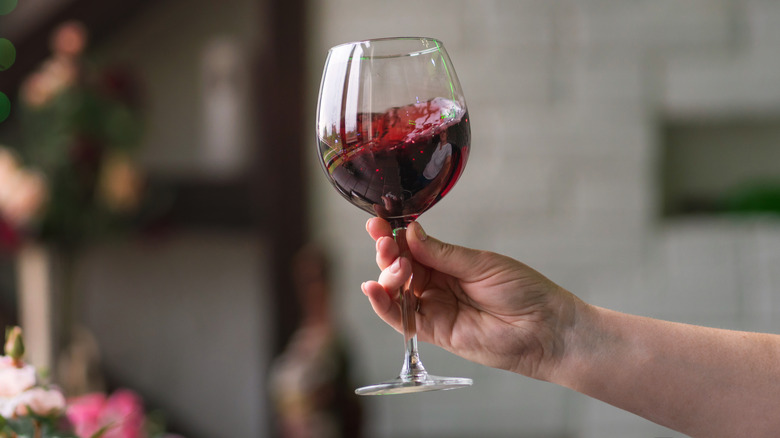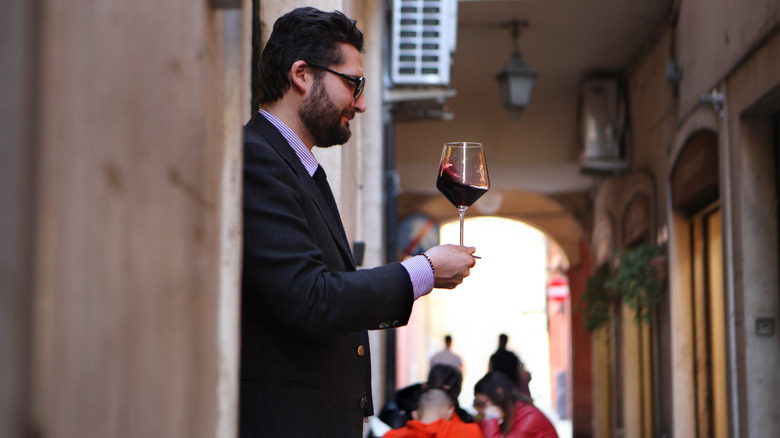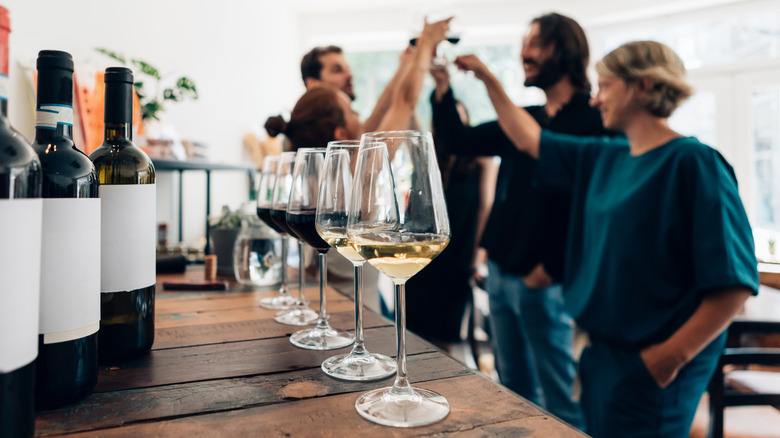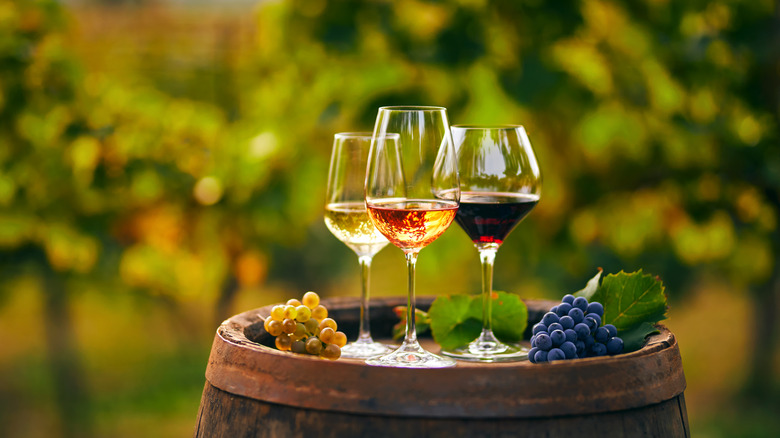The Science Behind Why We Swirl Wine At A Tasting
For newbies to the world of wine, the vast amount of options on the market can be overwhelming. According to Wine Folly, there are nine primary types of wine to choose from, with 1,300 different wine grape varieties. From those exciting sparkling varieties to light roses or heavier reds, there's something for every palate.
While the wide variety within each of those categories is intimidating to some, the scope of wine's reach is also one of its biggest draws. And the history and language of the drink is thrilling all on its own. (Winemaking began all the way back in Georgia in 6,000 B.C.E., per National Geographic, so there's certainly a whole lot of knowledge to unpack.)
Wine has a detailed history, and many drinkers of it have become passionate experts of the beverage over time. But you don't need to be a sommelier to enjoy the taste and culture of wine. Whether novice or expert, it's always good to know a little bit about wine and its most basic forms. Let's start with one of the most essential things: Why should you swirl wine before you drink it?
Why you should swirl your wine before taking a sip
Every element of smell, look, taste, and texture comes together to make a wine, so it's important not to skip a step. But according to Food & Wine, swirling your drink is one of the most integral parts of the experience.
The first component of swirling your glass is that it introduces an important presence into the cup: oxygen. Bringing air into the equation allows the wine to open itself up and fully express its flavors. Per VinePair, this phenomena is known simply as the "opening up" of a wine. And according to Wine Enthusiast, it gives wine a softer taste, as the oxygen breaks down harsher flavors.
The second important thing swirling your glass does also relates to scent. Swirling brings the wine closer to your nose as it sticks to the side of your glass, so it's much easier to decipher the smell. Per Science World, smell makes up about 80% of what we taste, so enhancing it is especially important.
The wine-tasting experience
Before jumping headfirst into a wine tasting, there are some basics you should know. When you're first starting to figure out the drink, it's helpful to know its most basic forms. While there are countless wine brands to choose from (we'd recommend a sustainable wine option), don't be afraid to try as many as you can to figure out which taste is best for you. According to Wine Enthusiast, while this process takes time to hone, it's a lot of fun along the way.
One of the most essential parts of trying any new wine is focus. Tune out all distractions and simply look at the wine in your glass first, suggests Wine Folly. Notice the color. Then, give it a swirl for a few seconds, making a circle at the bottom of your glass. You can do this by holding the glass on the table or by moving it in the air, but many prefer the aid of a table, per Wine Enthusiast.
Now, look and see the drops of wine forming on the side of your glass as you swirl. These are called tears and indicate the amount of alcohol in the wine. The more tears are visible, the more alcohol there is.
How aromatics and taste factor into wine-tasting
After you've taken note of those tears, it's time to move onto the smell of your wine. VinePair suggests bringing the glass up to your nose and inhaling. Are there notes of a floral smell, or an herbal or fruity one? Can you get specific and notice a hint of strawberry or oak? Figuring out these distinguishing factors is part of the experience of trying wine and can even train your nose to become sharper.
After figuring out the aromatics, it's time for the main event of the evening: taste. Take a sip of your wine and swirl it in your mouth, noticing both the taste and mouthfeel of the drink. Is it sweet, acidic, or full-bodied? Focus and taste every note.
Now, you've completed the wine-tasting process, simple as that. From here, you can form an initial opinion on the wine, and later, you can figure out what you like best. And when you go to one of the best wineries around, you can blend in with the experts.



